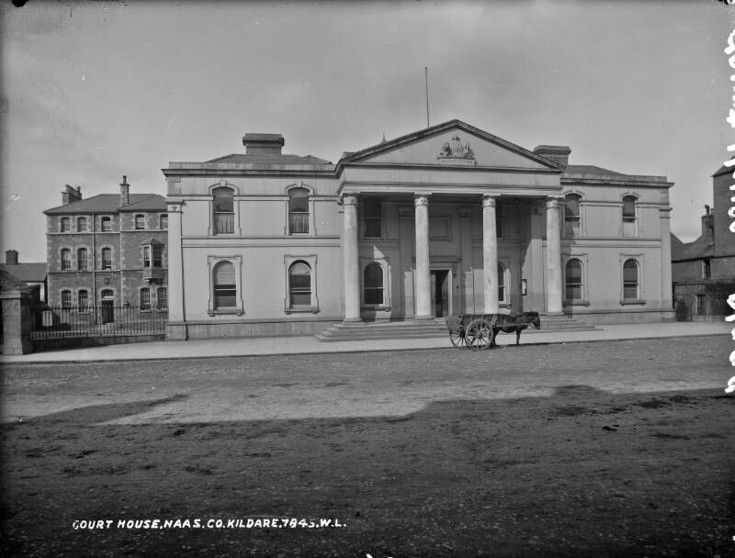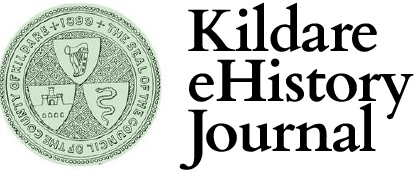Kildare County Council Elections of 1925 (by Liam Kenny)

Civil war … what civil war?
Civil war politics is the short-hand terminology to describe the dominance in Irish public life through the last century of the two major party groups – Fianna Fáil and Fine Gael. Or in more personal terms it’s a term that describes the contention between the ghost of Michael Collins and the reality of Éamon de Valera. The allusion to the civil war refers to the internecine conflict that erupted in the summer of 1922 over violently contrasting positions on the settlement agreed with the British government on the precise status of an independent twenty-six counties. Although the war ended within twelve months it was perceived to have left a deep division in Irish political discourse which was to continue through the twentieth century.
It is surprising then that the county council elections held just three years after the outbreak of the civil war appear to be almost devoid of the residual bitterness that might have been expected after such a divisive conflict. The political party structures familiar in later decades had not evolved other than the Labour party which was to do well in the elections as did the farmers’ representatives. The council elections had been scheduled to take place in 1923 but because of the disturbed state of the country were deferred several times until eventually fixed for June 1925.
From May 1925 the various interests were getting their election machines in place. In Carbury a convention of the Co Kildare Farmers’ Union brought together members from its Robertstown and Donadea branches to select candidates for the Clane electoral division. The chair, one C.W.Smyth, struck a note which was to be familiar in subsequent campaigning for the late June elections – that the elections should be about electing business-like candidates with no political baggage. He applauded the decision of the Cumann na nGaedheal (later Fine Gael) party not to put forward candidates. The mantra of the farmers was to reduce council spending so as to relieve the burden of rates which they were obliged to pay to the local authority. In some counties rate collection had collapsed which led to the new Free State Government removing the sitting councillors from office and replacing them with a tsar-like administrator. This was the fate of Kerry, Offaly and Leitrim County Councils. Kildare had escaped such drastic centralisation of local business but the county’s farmers were determined to shave every penny off the council’s rates bill.
In regard to Labour it seemed that the party had regretted its decision to step back from the elections which had elected the first Dáil in 1919 with a spokesman saying that the workers would have an opportunity in the Council elections to elect working-class representatives. Among the Labour priorities were to secure the resumption of the river Barrow drainage project which would bring badly-needed employment together with securing a new sugar-beet factory for Co Kildare – it eventually landed in Carlow.
For the republican faction a Sinn Féin conference in Straffan nominated what should have been the dream term in terms of electoral appeal including Michael O’Kelly who had recently lost his job as editor of the Leinster Leader in controversial circumstances; Thomas Harris of Caragh who had been wounded in the 1916 Rising ; James O’Connor of Elm Hall in Celbridge and an anti-treaty activist; and John Traynor, prominent nationalist of Haynestown near Kill. In the end none of these republican luminaries secured enough votes to land a seat.
On polling day itself, 23 June, the local press reported that there was apathy and indifference as regards the outcome. That said, there were some impressive turnouts : the voters of Maynooth, Celbridge, Clane and Straffan registered an 80 percent turnout. By contrast many other polling districts recorded a lacklustre 45 percent or less turnout. A local commentator offered an explanation that would ring true in a Kildare context – a race meeting in the Curragh on election day had diverted voters’ attention from their electoral duty.
The turnout may have been low but the results were decisive with the Farmers’ party and Labour capturing all but two seats on the 29 member council. Bertram Barton of Staffan secured almost double the quota in the Naas electoral area while in Clane his farmer compatriot Patrick Phelan also headed the poll. In Newbridge, Michael Smyth, secretary of the Transport Workers’ Union took the first seat for the Labour interest. In total the Farmers Party won 14 seats, Labour 13, one Independent and but one Republican. Certainly the civil war of just three years previously had little impact on the first county council elections to be held in an independent Ireland.
Our thanks to Liam Kenny of Naas Local History Group for forwarding on the piece below on the June 1925 Local Elections to Kildare County Council.
The image is of the County Courthouse, Naas, meeting chamber for the newly elected Councillors in 1925.
